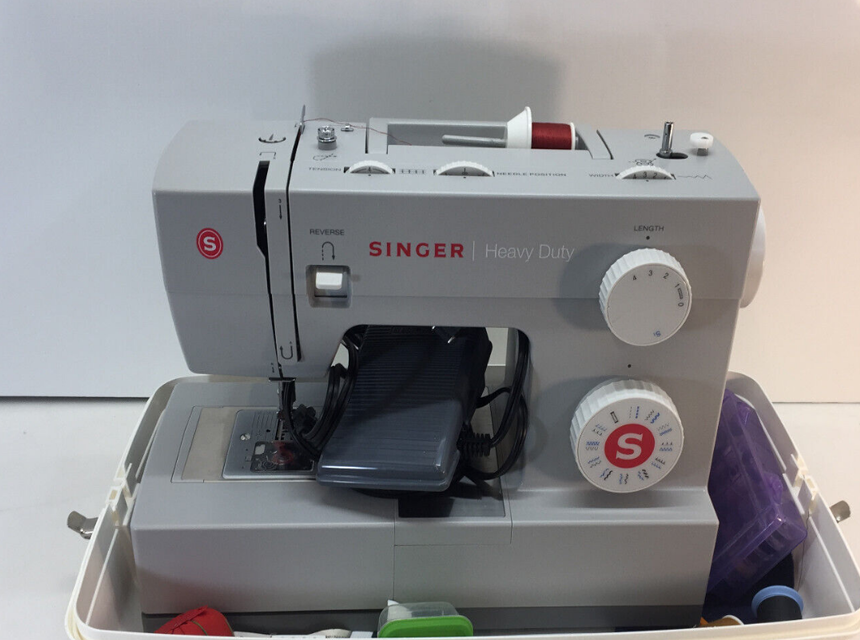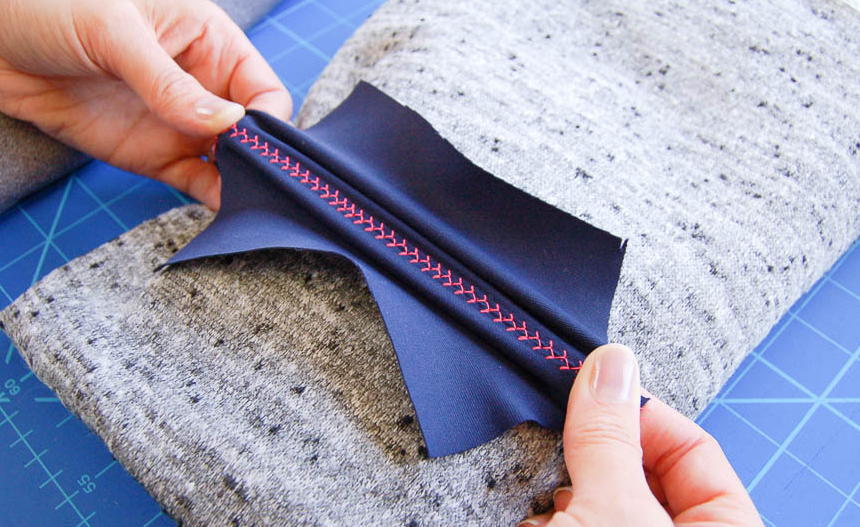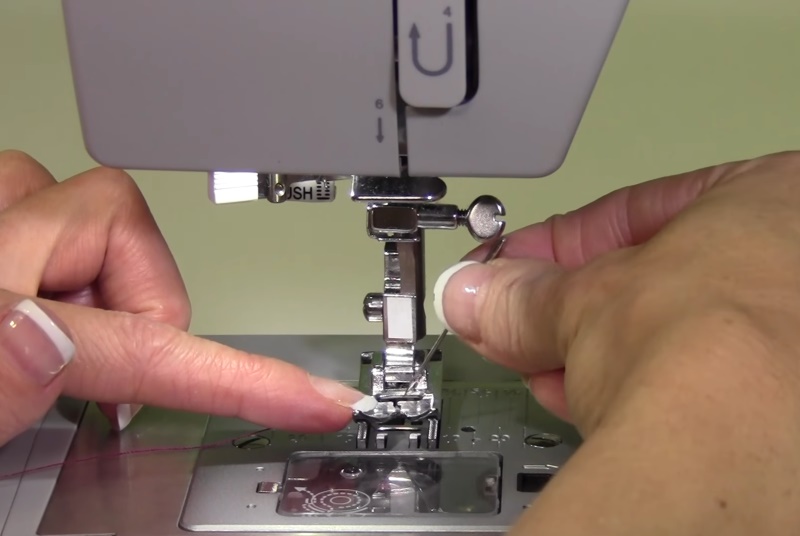
Stockings and tights are probably some of the first things that come to most people’s minds when they hear nylon. But there is more to this versatile fabric than women’s garments or sportswear. Invented in the United States in the 1930s to address the textile shortages during the war, nylon has come a long way from a cheap substitute to silk and cotton. Nowadays, it is one of the most commonly-used materials for lingerie, swimwear, shirts, raincoats, umbrellas, and even carpets and toothbrushes.
Without a doubt, nylon fabric has various uses. But the real question is: does nylon shrink? If you’re used to working with cotton and wool and want to shrink your new nylon, you’ll need to acquaint yourself with how to shrink it. It’s not impossible, and there are a few ways to do it.

Nylon is a synthetic fabric material. It’s considered a “thermoplastic,” which essentially means that it’s made using plastic (again – synthetic) and that it becomes more pliable when heat is applied. This chemistry is very important to us, so store that bit away for later.
Unlike semi-synthetic fibers, such as rayon, nylon is entirely artificial, like the Ripstop Nylon Fabric, and made of readily available ingredients, making it a very cost-effective and ideal material for sewers and budding apparel businesses. It is highly durable, stretchable, and elastic. Additionally, nylon is resistant to tears, water, abrasion, sunlight, and heat. The material may melt instead of catching fire.
The short answer is no, but also yes. No, in the sense that it doesn’t shrink so easily (or accidentally) as that cable-knit fisherman’s sweater that now fits your cat. Yes, in that you can shrink it if you really try. To elaborate, synthetic materials generally don’t typically shrink the way cotton and wool might. So, when thinking about “does nylon shrink in the wash?” or “does nylon shrink in the dryer?” the basic answer will be no. This is because nylons and most synthetic textiles come preshrunk, while natural materials like wool and cotton don’t.
While pure nylon (i.e., jackets mixed with polyester) is hard to shrink, it may melt in very high temperatures. For this reason, it is best to wash it using cold water and air dry it instead of putting it in the dryer to retain its shape.
Nylon admittedly doesn’t shrink all that much. Pure nylon may never shrink for you at all. The fact that nylons come preshrunk means that there isn’t all that much more space to shrink and the fact that they’re plastic means that at some temperature, they may just melt.
But when nylon does shrink, how much shrinkage should you expect? The answer depends on whether the nylon is pure. If not, the material mixed with it matters. Still, in blended fabrics, the shrinkage is impossible to quantify.
If the apparel is 100 percent nylon, it will unlikely shrink. But if the garment is a combination of nylon and another material, such as cotton, it may shrink. Blended fabrics with a high nylon percentage will have minimal, negligible, and barely noticeable shrinkage.
There are a number of ways to try to shrink nylon. It is a delicate process and may not always be successful. You can get better results for fabric blends, such as nylon and cotton or nylon and wool.
Remember when we told you to remember the point about “thermoplastics” and temperature? All but two of these work by applying heat in different ways. So, does nylon shrink in hot water? Yes! Let’s find out how to shrink nylon and other such synthetics using what we know about the fabric material.
Before you do anything to the fabric, check the tag. This will tell you whether you even should try any of these, and if you can, which ones.
Some nylons should not be shrunk at home because it’s too delicate. Others will be dry clean only, which takes almost every tactic on this list right back off of it.
I’ve heard a lot of “does nylon shrink when washed?” and that seems like such a simple answer, but it’s not quite. It usually won’t, but it’s worth it to try washing nylon in very hot water. As hot as the water will go, that’s where you want to try to wash it to shrink it. This one, however, comes with a bit of a caveat: it may not stay shrunken.
On the brighter side, some people have managed to shrink stretched-out nylon leggings and tights under high temperatures in the washing machine. If you want to restore loose nylon garments to their original sizes, you may want to try this technique.
Put the clothes into the washing machine, add ½ cup of ammonia to help keep the color of the fabric, then set the temperature to the highest washing cycle. Be sure to throw the nylon into the dryer afterward. We’ll go over why a little later.
Another related tactic is to soak the fabric overnight. This may work for you because nylon does shrink in very hot water. When the overnight soak is over, throw that fabric into the dryer and give it a quick tumble until it’s dry. These three tactics here all work through temperature.
Soaking in hot water is the cheapest and perhaps the easiest method of shrinking nylon. Make sure to submerge the fabric in hot, boiled water for at least six hours. Do not wring the cloth after removing it from the water to avoid permanent wrinkling. Air-dry the garment the following morning.
Again, we know. We’ve been over this. But, again, under the right circumstances, the high heat of the dryer and all the movement of a tumble cycle may be the trick.
After the wash cycle, switch the setting to medium heat dyer cycle for 25 minutes, then air-dry the garments by laying them flat. It is worth noting that the dyer method is generally effective on nylon garments blended with natural fabrics such as cotton and wool.
Considering the previous information, this sounds contradictory. It would seem that extreme temperatures, in general, will do the trick. However, this one is a temporary shrink for sure.
This technique works best with nylon-spandex blends. Soak the garment in ice-cold water for an hour. You will notice the shrinkage upon removing the fabric from the water. Eventually, the clothing will stretch back to its original size, especially if exposed to heat.

Fill the iron such as PurSteam PSSI-01 with cold water and set it to steam. However, don’t touch the metal to the fabric when you start ironing; hover the iron over the fabric. Again, this works using heat. Try this one if you don’t have an iron and need one that gets a good head of steam going. You should get enough steam out of that one to get that nylon shrunk.
This paper may be useful to check out if you want to know more about this temperature-to-shrinkage ratio. It’s a research paper, so it may be pretty dense to read, but figures 2 and 3 are interesting. To sum that bit up, though: Higher temperature + more time = more shrinkage.
This should provide some more in-depth reading material on how the whole temperature and shrinkage causation happens.
Before moving on to the last tactic, we want to share a helpful little tool with you if you are entirely adamant about shrinking the fabric. Now, we could give you the shrinkage formula, but why would we make you do the math when handy little calculators like this one exist for free? You’ll understand in a moment why this won’t be so helpful for the next tactic.
We told you that that handy little calculator would be far less handy here. If the above tricks don’t do the trick for you, it may just be that you’ll have to pick up a pair of scissors. I’ll admit that we find cutting the most tedious part of sewing, but sometimes it must be done.
Hemming also means cleaning up those rough edges left behind if you’re not going for that grunge, distressed look. However, sometimes it must be done. If you’re looking for some good materials to get that going, you may want to check our list of the best sewing threads.
Any question of whether polyester or spandex and other elastane-type materials shrink in the wash or in the dryer, the answer will be the same: not under normal washing conditions. These come preshrunk.
So, do nylon and polyester shrink when combined? Yes, but only with the kind of effort outlined above, with a caveat. These two materials may be very difficult to shrink when combined, as they are made with two different types of plastics. In fact, this blend is liable to melt when any of those heat-based tactics are used.
Because it’s a natural fabric material, cotton alone typically has a shrinkage rate of about 20% when washed in hot water. It will depend on how much cotton there is in a specific blend here, but the cotton part of the blend should cause it to shrink more than pure nylon would.
The word “elastane” looks a lot like the word elastic, which is related to this blend’s caveat. Spandex is just another word for elastane, which we didn’t know for the longest time. So when we ask “does nylon and spandex shrink?” we’re also asking, “does nylon and elastane shrink?” So, do nylon and spandex shrink when blended after the above two cases? You may think it’s the same as the case of nylon and polyester, but you may be surprised to find that that isn’t the case. This is another case of synthetic blended with synthetic, but this blend is less liable to melt. You may find that the fabric will go the wrong way: it may have just stretched with some of these tactics.
Now that we’ve considered all the ways to shrink synthetic fabrics and which synthetic blends will shrink, you may reconsider the fabric you choose for your next project. You may find it worthwhile to pick another fabric from our list of the best types of clothing materials if you’re planning a project expecting to shrink the fabric for any reason. The right tool for the job and the right basic foundations are the starting points for every successful project.
Now that we’ve gone over how to do it, we need to ensure we do it right. As we’ve gone over before together, some blends will melt at higher temperatures; others will stretch.
When using these tactics on store-bought, finished products (like a pair of biker shorts), consider the fact that these machine-made products are typically built to fit a mold at their current size and sometimes trying to shrink it can distort that piece of clothing, and nothing more.
Remember, when trying to shrink these materials, nylons and other synthetic fibers are designed not to shrink and sometimes can be treated with extra measures to ensure that they won’t. Things like bathing suits and yoga leggings will probably not shrink when you try, as they’re designed to withstand heat and water, and they may do nothing but distort. In that case, it may be time to hop onto depop or get onto a sewing machine if you can tailor it yourself. If that’s your chosen route, you may wish to check out our best sewing machines for advanced sewers if you’re ready for an upgrade.
Of course, we’ve already been over the risk of melting and stretching, but this is a quick reminder to always check the label before shrinking these fabrics. Like any chemistry project, it’s important to ensure that the tactics you use are right for the materials you have.
So, does nylon shrink? To conclude: yes and no. Essentially, nylon shrinks with effort, as do elastane and polyester. You have to be careful with it and manage your expectations, as they don’t shrink much, but it’s entirely possible.
Nylon fabrics mixed with other natural materials will shrink under the right conditions. It is crucial to be cautious when shrinking nylon fabrics to prevent injuries and damage to the cloth. Remember that specific nylon clothing will only get distorted when you try to shrink them. If the garment does not shrink further, you can sew it to the preferred size to dodge losing the entire clothing.
It’s key to choosing the right material for the job; sometimes, you just have to shrink the fabric, and that fabric just has to be synthetic. This article should have provided you with the tools, tactics, and resources you’ll need to successfully shrink your fabric and finish with exactly the product you were hoping for from your project. Hope now you have the answer to the question: ‘does nylon shrink?’.





